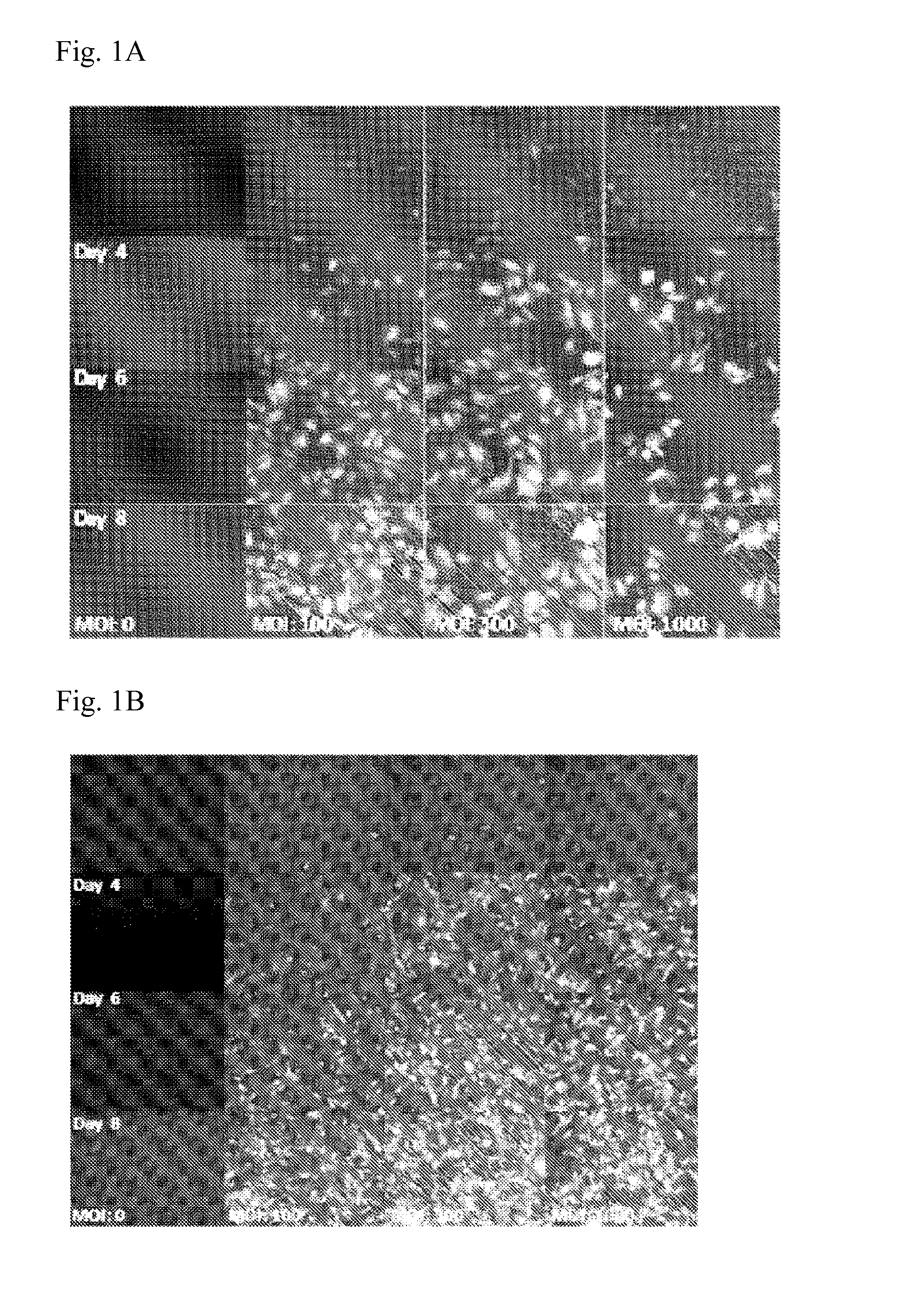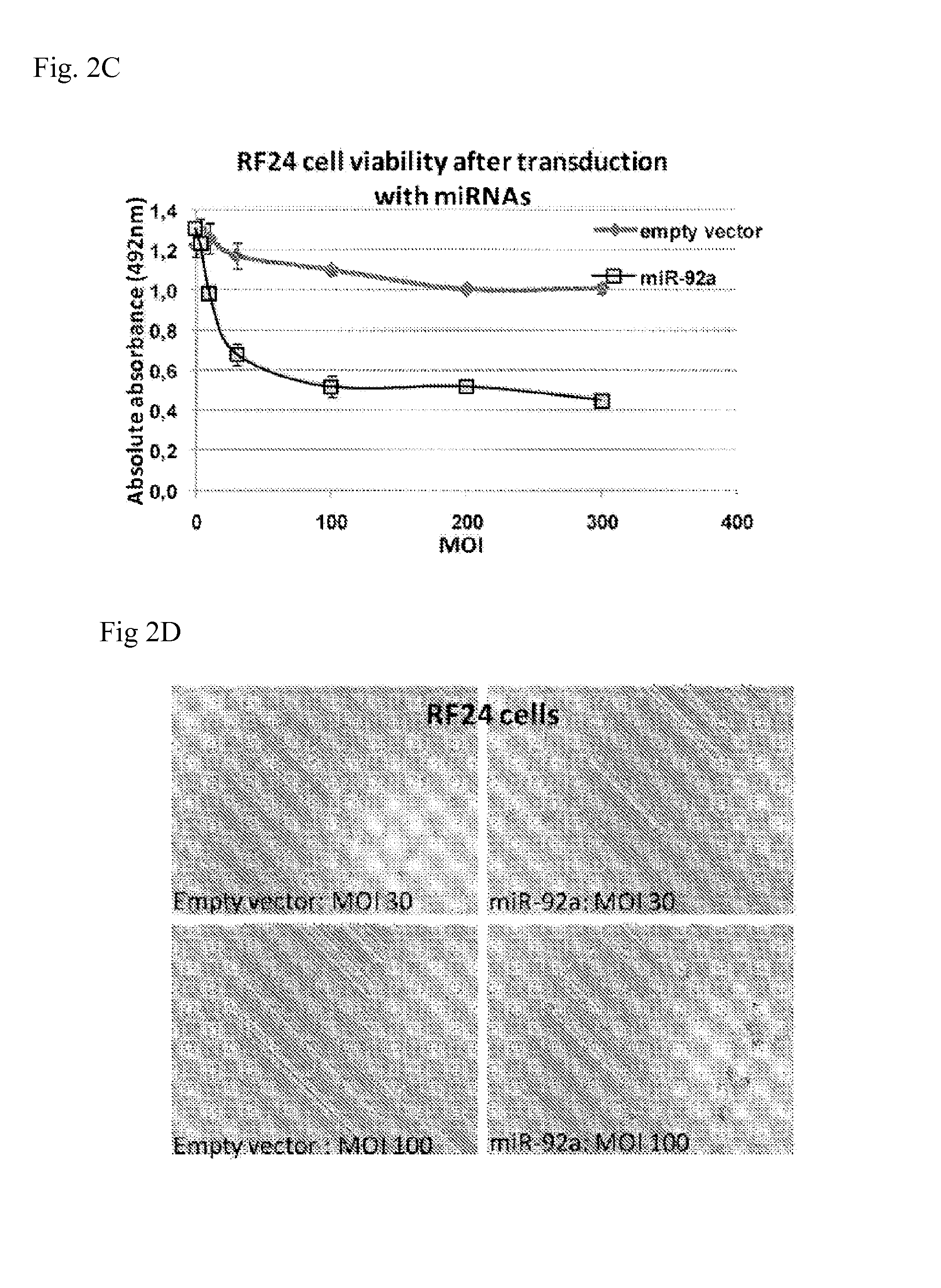MiRNA for Treating Diseases and Conditions Associated with Neo-angiogenesis
a technology of mirna and angiogenesis, which is applied in the direction of viruses/bacteriophages, drug compositions, dsdna viruses, etc., can solve the problems of mirna expression and function dysregulation, human diseases, and evoke clinical resistan
- Summary
- Abstract
- Description
- Claims
- Application Information
AI Technical Summary
Benefits of technology
Problems solved by technology
Method used
Image
Examples
example 1
Generation of the Lentiviral Library Encoding miRNAs
[0342]Human miRNAs were selected from both the public miRNA repository (www.mirbase.org) and proprietary small RNA deep sequencing data (see WO 2007 / 081204). The miRNA sequences were amplified from their genomic location with amplicons containing the full-length pre-miRNA hairpin and a flanking sequence on both sides of 50-150 basepairs. The primers for the amplicons were designed using a custom implementation of the Primer3 software (www.geneious.com). If the primer design program could not find appropriate primers in the designated sequences, the requirements for the flanking sequences were adjusted to 0-200 basepairs. The designed primers were complemented with a 5′ GCGC overhang and a restriction site for directional cloning. As default the primer upstream of the miRNA was complemented with a BamHI restriction site (GGATCC) and the primer downstream of the miRNA was complemented with an EcoRI restriction site (GAATTC). Primers ...
example 2
Viral Transduction and Screening
[0351]Day-8: Start cell growth of RF24 cells and HUVECs in a T25 culture flask Coat a T25 culture flask per cell type with 2 ml 1% gelatin for an hour at 37° C. Thaw cells (these cells were frozen in 95% corresponding medium and 5% DMSO) obtained from the −80° C. deep freezer at 37° C. in a water bath. Clean the vial with 70% ethanol and transfer the cells in the culture flasks with 5 ml of the appropriate growth medium and place at 37° C., 95% humidity and 5% CO2. 4 hours after seeding, the DMSO containing medium must be replaced by fresh warm culture medium. The cells are subsequently incubated for three days at 37° C., 95% humidity and 5% CO2.
[0352]Day-5: Transfer of RF24 cells and HUVECs to a T75 culture flask
Coat a T75 culture flask per cell line with 6 ml 1% gelatin for an hour at 37° C.
Remove gelatin.
Wash the T25 culture flask with cells once with 1×PBS.
Spread 0.5 ml TrypLE Express evenly over the cell surface and remove the excess.
Incubate at ...
example 3
Hit Selection & Confirmation
[0361]To select the miRNAs that affect cell growth, the Z-score was chosen. To evaluate the normal distribution per plate and of combined plates, a distribution plot was made with the calculated median and standard deviation and with the actual values.
[0362]Several methods to calculate the Z-score were evaluated with different cut-offs:
Method 1:
[0363]This method calculates the individual miRNA Z-score per plate. The standard Z-score uses the mean and the SD of the miRNA population.
Method 2:
[0364]This method calculates the individual miRNA Robust Z-score per plate. The Robust Z-score uses the median and instead of the SD the median absolute deviation (MAD) multiplied with a given number (1.48) to simulate a normal population (Chung N. et al., J Biomol Screen 13:149-58, 2008).
[0365]The abovementioned methods were used to select the significant inhibitors and significant stimulators for the MTS screen. To evaluate the normal distribution per plate and of com...
PUM
| Property | Measurement | Unit |
|---|---|---|
| Level | aaaaa | aaaaa |
Abstract
Description
Claims
Application Information
 Login to View More
Login to View More - R&D
- Intellectual Property
- Life Sciences
- Materials
- Tech Scout
- Unparalleled Data Quality
- Higher Quality Content
- 60% Fewer Hallucinations
Browse by: Latest US Patents, China's latest patents, Technical Efficacy Thesaurus, Application Domain, Technology Topic, Popular Technical Reports.
© 2025 PatSnap. All rights reserved.Legal|Privacy policy|Modern Slavery Act Transparency Statement|Sitemap|About US| Contact US: help@patsnap.com



